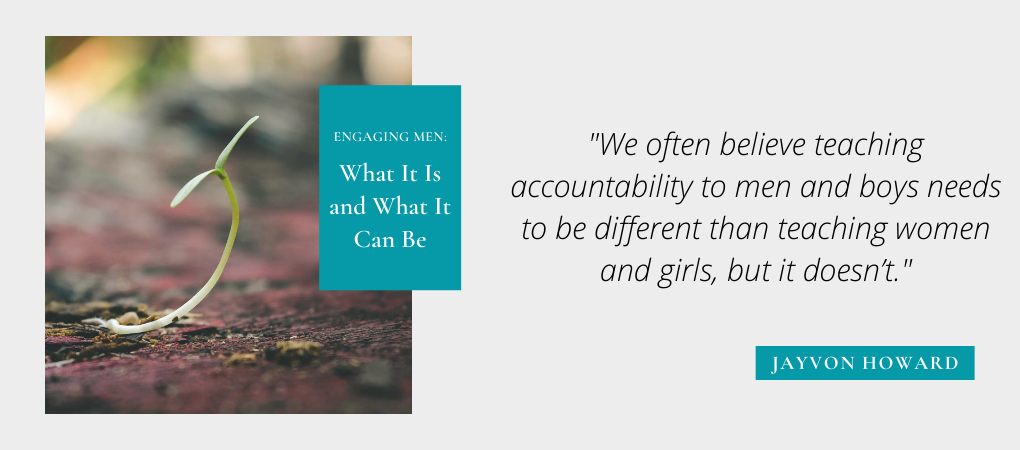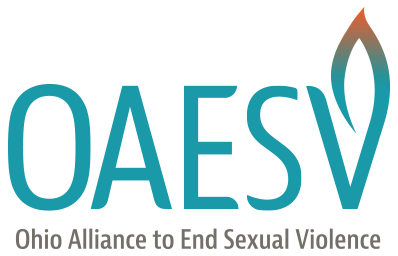
Engaging Men: What It Is and What It Can Be
What do you think of when you hear ‘engaging men’ work? What type of men are you thinking of when we saying engaging men? Are we engaging men in violence prevention, or as survivors of sexual violence? What are these men wanting or needing exactly? Why is it important to engage men in the movement?
Engaging men is a leading conversation to mobilize men as educators and as allies in prevention while also offering advocacy, support, and space for healing to men who witness and are victims and survivors of violence. Generally, understanding engaging men work has been defined as vague or felt disarming because of our cultural practice and narratives that discredit the realities of survivorship. There are myths that men cannot be survivors and cannot be raped, or that men are only perpetrators.
This mythology persists within and outside of our anti-sexual violence movement. It is because of this logic that we perceive male survivorship as non-existent or disconnected from current anti-violence efforts.
We’re trying to create a movement that seeks accountability and healing without a clear enough distinction about who is being held accountable and who we are seeking healing for.
There are complex histories of feminism that have influenced our positions in how we coordinate, collaborate, innovate, and provide services often to the exclusion of marginalized or other identities. Some may argue that we cannot accept, or struggle to accept, men into the movement because they are a dominant-privileged group. This ignores race privilege, class privilege, ability, and sexual orientation. These privileged identities do not act as barriers to other survivors because the primary analysis our movement continues to rely on is gender specific. For instance, those with racial privilege (white) or class privilege (wealthy/access) or ability (non-hard hearing) privilege are more easily invited despite their dominant-privileged status.
The intersections of each of these identities also influence how we answer the questions above and how engaging men work is influenced by these social locations. I argue that engaging men is recognizing that, not only men, but many people are sometimes both: survivor and perpetrator. I think this is an area that we are struggling to contend with regarding men. Most men do not commit acts of violence; and just as we assume survivors in general are are unlikely to be vulgar and violent people, we need to extend this to men. As advocates we typically approach our work with trust. If we understand that most men also do not commit acts of violence – it is easier to see them as survivors.
It is important that we distinguish between engagement that focuses on the needs of survivors, and engaging in violence prevention. We’re trying to create a movement that seeks accountability and healing without a clear enough distinction about who is being held accountable and who we are seeking healing for.
Patriarchy is the sociopolitical system that you’ll hear me discuss time and again because it’s critical to analyze within these conversations. A reminder that patriarchy is a sociopolitical institution and tool that assumes men are the divine governors of all others, and that their dominion requires the rejection of femininity. This institution weaponizes gender to control, objectify, or enact violence against women and girls. Although it functions to target femme/female presenting people, it is a tool of power and therefore also wages war against young boys and men.
It is this system that cultivates the logic that has us believing in men only as perpetrators; encouraging rites of passage; and not teaching about consent, relationships, health, and safety.
According to the National Sexual Violence Resource Center, although 30% of men report that their assailant is female, many of our assumptions are that girls and women cannot be aggressors of violence. Think about how we discuss children’s safety and who we feel children are safest with. We often assume that children are safer with a woman than they would be with a man, but this is not automatically the case. And where we teach our girls vigilance and awareness of the world of violence because we want them to be safe, it is our responsibility to extend the same protection and care to young boys and men.
We fail our boys and men when we assume they should and would simply use violence to defend themselves if they are attacked. This requires a logic that violence is inevitable and necessary, especially for men. If our mission is to end sexual violence we must also transform the conditions that would allow for violence to exist, including in our ideologies and organization of social spheres such as gender. We fail everyone when we are living in a system that picks and chooses who is eligible in being held accountable.
These are just a few examples of how these patriarchal assumptions impact us all. Recognizing how much harm and pain needs to be contended with and how much healing and compassion is necessary is one of the first steps.
In our modern movement, the fear of engaging men comes from a society that fails to hold all male perpetrators accountable equally or equitably. We often believe teaching accountability to men and boys needs to be different than teaching women and girls, but it doesn’t.
We often believe teaching accountability to men and boys needs to be different than teaching women and girls, but it doesn’t.
Engaging men work can be an opportunity for us to innovate new ways of addressing systemic harm, transformative ways of cultivating equity and accountability, and work that helps restore healing justice for survivors. Engaging men is a continuation in the conversation of: what is healing, accountability and justice? When is justice served, and who determines this?
Engaging men work can ask us to rethink conversations about violence, trauma, intervention and prevention. It can also challenge and remind us to be more inclusive of our trans siblings and being inclusive beyond the binary in language and best practices. We can expand and be reminded that violence knows no gender, sexual orientation, or sexual behavior. Engaging men work can provide greater opportunities to advocate against macro level and global violence such missing children; the prison industrial complex; global armed conflicts; and the impacts on safety and security for women, children, and families. These closer examinations of male survivorship and the nuances can only allow us to gain momentum in creating a future without violence.
Engaging men work can push the conversations of institutional violence beyond manhood and masculinity and toward change of attitudes and behaviors and the abolition of violent institutions and cycles.
Perhaps these are the voices missing that will help set us free.
Find me on LinkedIn: Jayvon Howard
jhoward@oaesv.org
216-314-6795
